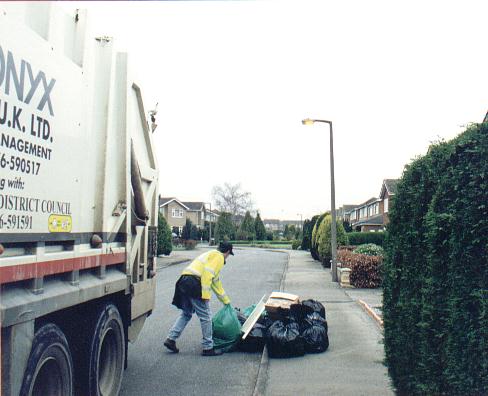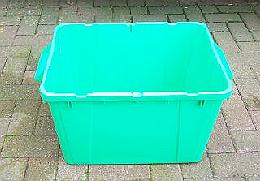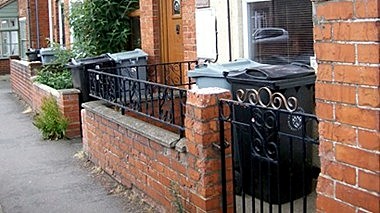|
Rubbish
Once-a-week household rubbish collections were established by law under Disraeli's Public Health Act in 1875 which imposed new standards of sanitation on local authorities in an attempt to stamp out cholera and other diseases spread by contaminated waste which claimed large numbers of lives. Since then, the right of British householders to have their refuse collected at least once a week has been recognised as essential to the nation's health and quality of life. It took some years for the scheme to be implemented throughout the country but by the turn of the century, weekly collections were being made in Bourne although only on a sporadic basis. The disposal of household waste became the responsibility of Bourne Urban District Council when it was formed in April 1899 but a regularised scheme for the collection of domestic rubbish did not begin until 1911. This consisted of a horse and cart with a bell attached to the cart to alert home owners that it was in the vicinity and the dustman, as he was known, was paid one shilling an hour for his services. The various parts of the town were covered in four days of each week and the rubbish collected was taken to the brick pits off West Road for disposal. By 1930, weekly door-to-door collections as
we know them today were fully operational with each household using a galvanised bin that was left within easy reach of the
dustmen when they made their call. The rubbish was then carted to a central dump, now known as landfill sites, and buried and the system has continued since, although with slight
variations. The scheme was successful, despite misgivings from the trade unions that it might involve redundancies, and the men welcomed the bags because they were easier to handle and far more hygienic than emptying the same bins each week.
The refuse collection service was
privatised in 1983 and is now carried out by the contractors, Onyx U K
Ltd., employed by the district council but the black plastic bag system
remained although garden waste was not allowed to be put into them and
special prepaid green bags obtainable from the council offices at the Town
Hall for 55p each were made available instead. The cost of the service for
the South Kesteven area prior to privatisation was £867,000 per year and
although this rose to £1.4 million by 2001, the district council
considered this good value for money when taking into account inflation
and an increase in property numbers over that period, averaging £25 per
property per year. Councillor Mrs Linda Neal, leader of SKDC, said: "Every household produces on average one tonne of domestic waste each year and the amount is increasing. At present, only 6% of domestic waste is recycled but it is possible to recycle half the contents of a household's refuse. That is what we have got to encourage people to do and educate them how to do it." The scheme began with collections on February 3rd when 25 tonnes was collected for recycling in the first week alone but this soon increased to more than 50 tonnes. As a result, new measures to increase efficiency in waste recycling were introduced by South Kesteven District Council as a result of government instructions in January 2003. The scheme, costing £250,000 in a full year, was intended to persuade home owners to recycle such commodities as cans and tins, plastic bottles, paper and cardboard, textiles and shoes.
Similar bins made of blue plastic were later introduced for bottles and glass with collections on different dates but these were phased out in September 2005 after only 18 months on the grounds that they were uneconomic. Garry Knighton, head of waste and contract services, said in leaflet to homeowners: “The council has made every effort to make the scheme a success but there have been a number of factors which have resulted in it failing, including the frequency of the collections and the limited materials collected.”
However, a
complete appraisal of the rubbish collection and waste recycling system
was carried out during 2005 and it was decided that the green containers
and the black plastic bags would go and be replaced by two wheelie bins,
one of normal household waste and the other for recyclable materials. The
council claimed that the twin bin system was being introduced in order to
meet tough new recycling targets set by the government and the decision
will eventually mean alternate weekly collections to be phased in starting
from September 2006 but it will take until June 2007 to complete the
process.
The wheelie bins were eventually issued to all house in the town during the autumn of 2006, two to each household, one black for household waste and one silver for recyclable materials, and the system remains in force today although not all homes have space to store them out of sight, particularly terraced houses in the older parts of Bourne and some of the newer properties which are being built without gardens.
REVISED JUNE 2011 See also Wheeling out the wheelie bins The disposal of bulky rubbish The importance of waste recycling by Linda Neal Waste recycling banks Vandalism, litter and graffiti Rubbish in the countryside Waste paper recycling during World War Two
Go to: Main Index Villages Index |
||||||||





